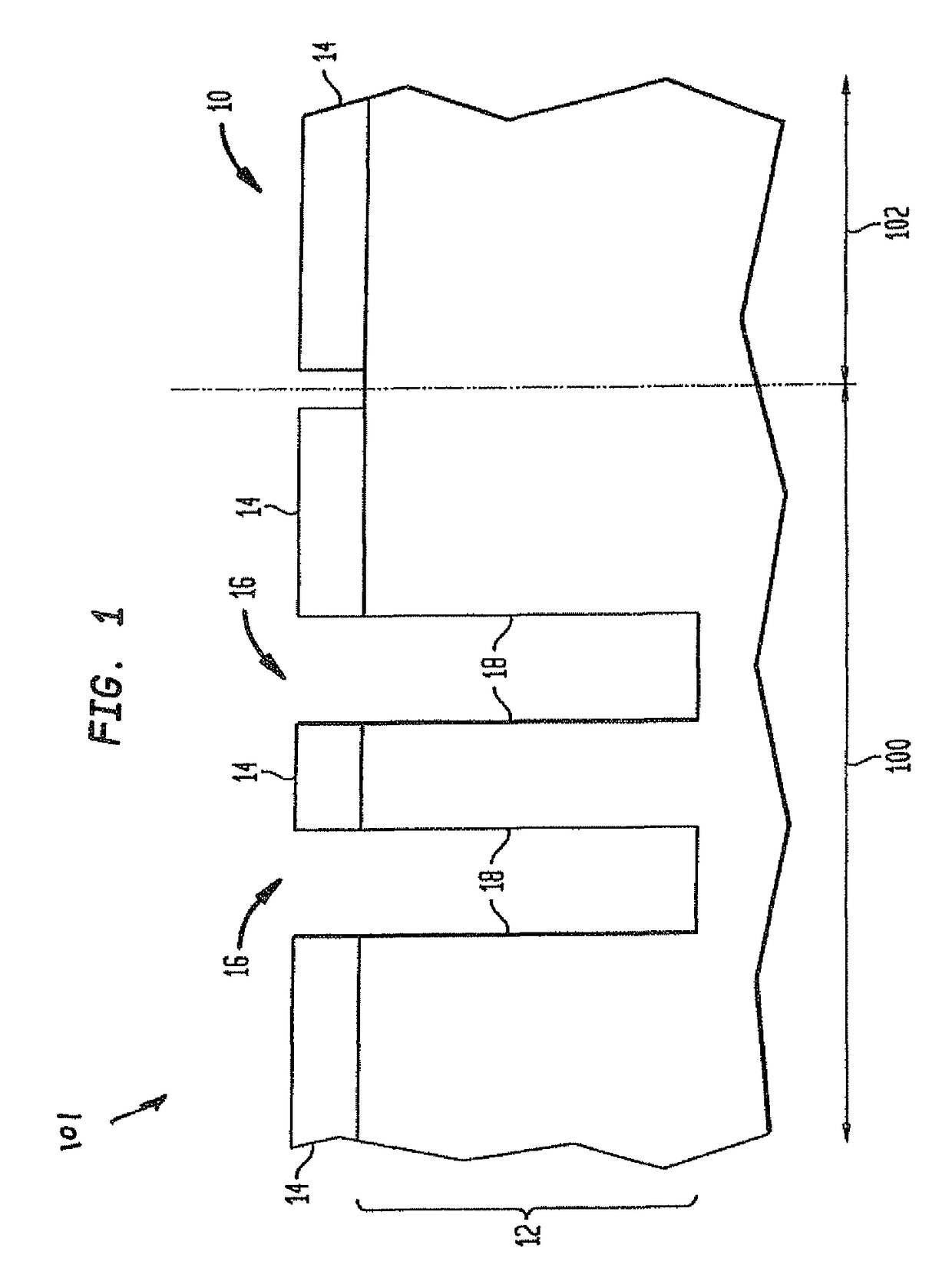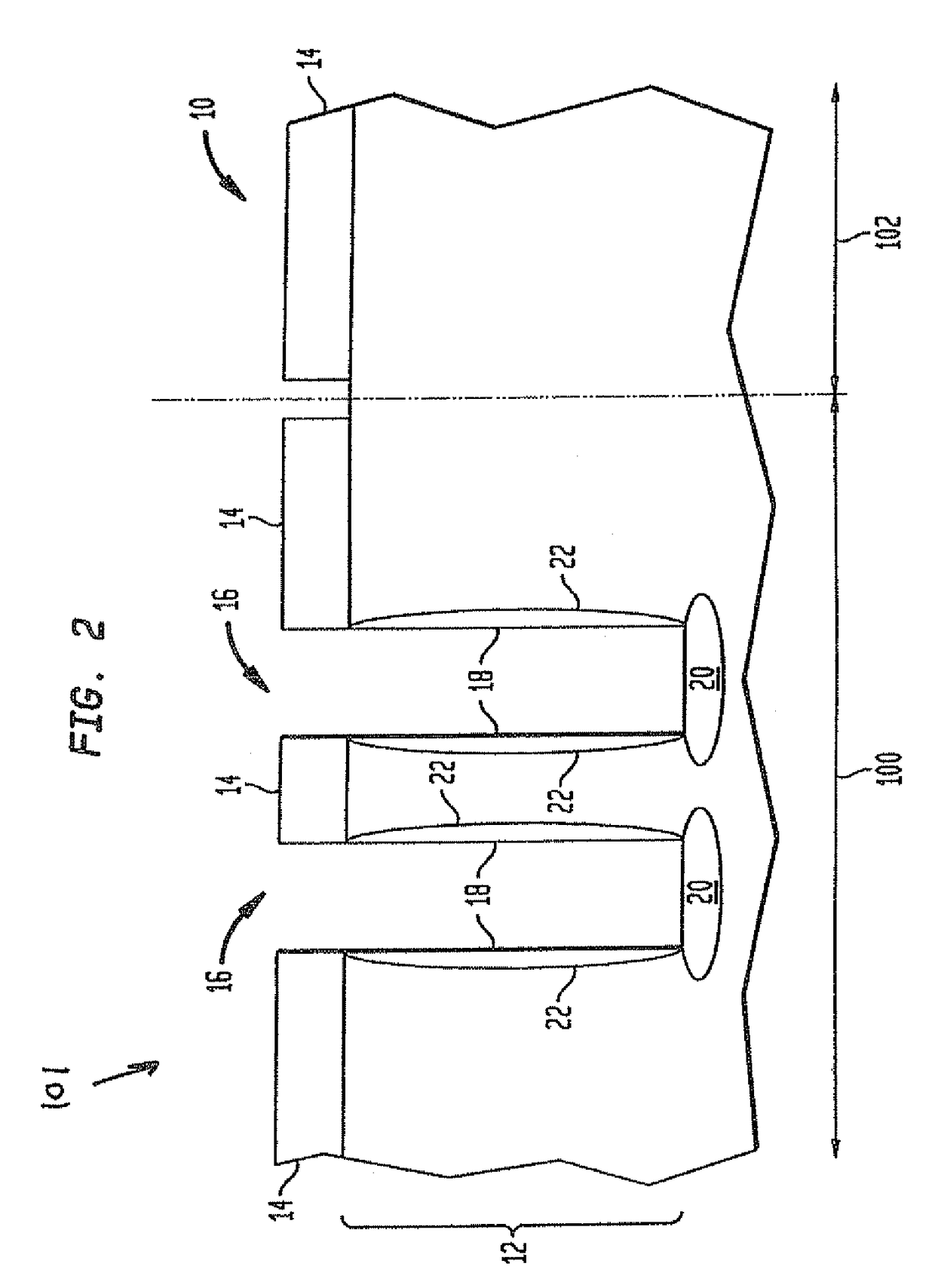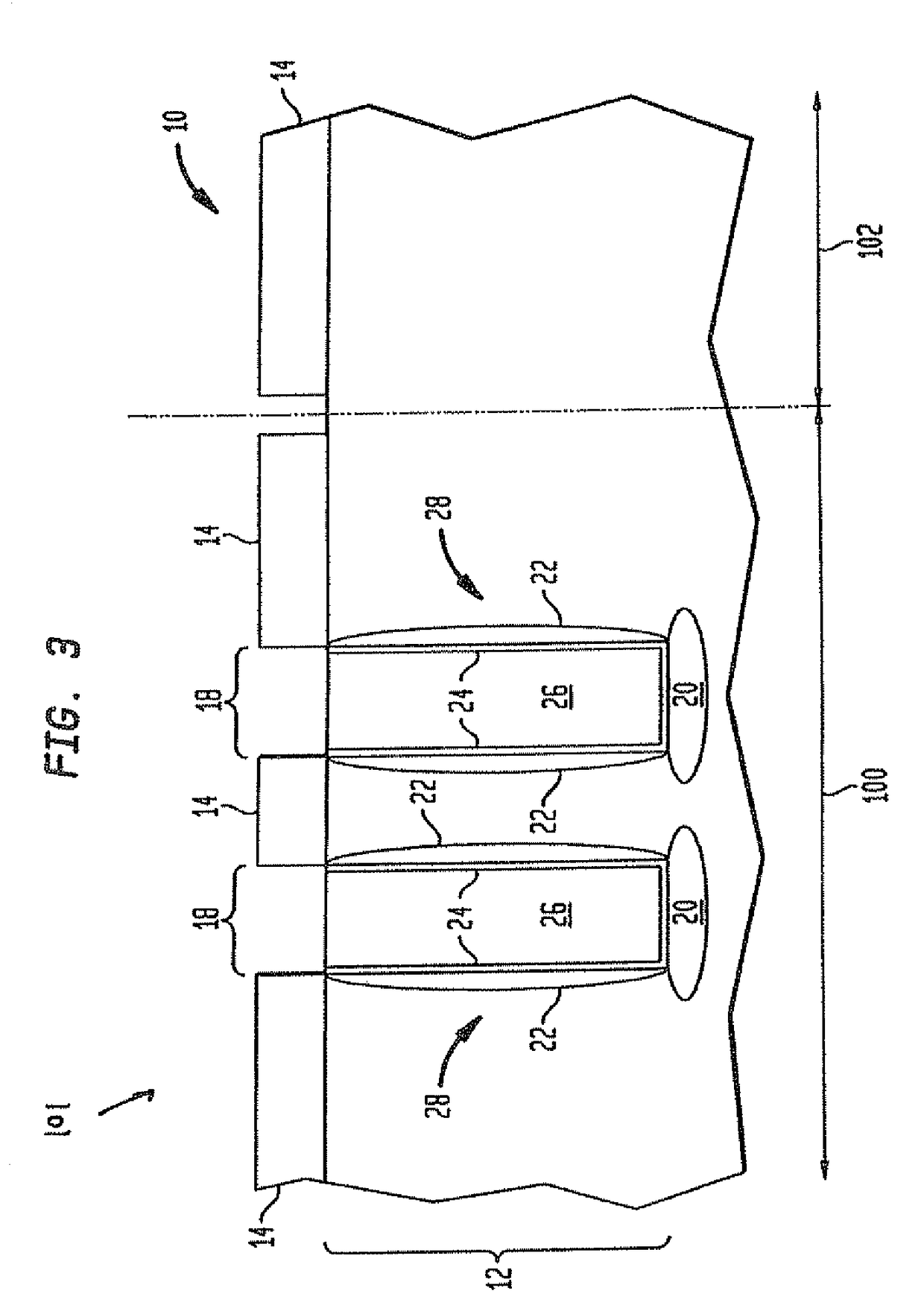High-density, trench-based non-volatile random access SONOS memory SOC applications
a sonos memory and trench technology, applied in semiconductor devices, electrical equipment, instruments, etc., can solve the problems of difficult to provide the high voltage level necessary for floating gate operation, severely limit the battery life, and difficult to integrate floating gate memories with complementary metal oxide semiconductors (cmos), so as to reduce the minimum feature size, prevent short-channel behavior of select gate, and scale easily
- Summary
- Abstract
- Description
- Claims
- Application Information
AI Technical Summary
Benefits of technology
Problems solved by technology
Method used
Image
Examples
first embodiment
[0051] 2-TR SONOS memory cell wherein the select gate is located within a trench structure and the memory gate is located on a surface of a semiconductor substrate including the trench structure.
[0052]The first embodiment of fabricating the inventive 2-Tr SONOS memory cell begins with providing a structure 10 such as shown in FIG. 1 which includes at least one array region 100 and at least one region 102 that lies to the periphery of the at least one array region 100. Region 102 is referred to herein as an array periphery. The structure 10 shown in FIG. 1 comprises a semiconductor substrate 12 including a pad stack 14 having a plurality of openings 16 on top of the substrate 12 in the array region 100. In the array region 100, the structure 10 also includes trench structures 18 that are located in the semiconductor substrate 12. It is noted that the semiconductor substrate 12 in the periphery array region 102 is protected with a blanket layer of the pad stack 14.
[0053]The semiconduc...
second embodiment
[0080] 2-Tr SONOS wherein the select gate and the memory gate are both located within a trench structure that is formed into a semiconductor substrate.
[0081]This second embodiment of the present invention offers the following advantages: (1) The trench structure memory gate can be created prior to CMOS processing and can be truly integrated into CMOS processing. The ONO dielectric comes before the CMOS process and can be optimized without degrading the CMOS device. (2) The trench structure memory select gate is structurally shallower than prior art eDRAM trenches (1-2 μm tops) and it can be formed using simplified processing, e.g., oxidation for the select gate, resist recess process, ONO formation and a one trench process (fill, planarization and recessing). (3) Extremely small cell sizes can be achieved (on the order of about 0.07 to 0.09 μm2.
[0082]The second embodiment of the present invention begins by utilizing the processing steps described above in forming the structure shown...
PUM
 Login to View More
Login to View More Abstract
Description
Claims
Application Information
 Login to View More
Login to View More - R&D
- Intellectual Property
- Life Sciences
- Materials
- Tech Scout
- Unparalleled Data Quality
- Higher Quality Content
- 60% Fewer Hallucinations
Browse by: Latest US Patents, China's latest patents, Technical Efficacy Thesaurus, Application Domain, Technology Topic, Popular Technical Reports.
© 2025 PatSnap. All rights reserved.Legal|Privacy policy|Modern Slavery Act Transparency Statement|Sitemap|About US| Contact US: help@patsnap.com



